 It is very difficult to grow heat-loving vegetables in the northern regions, but there are gardeners who can boast a good harvest. This result is possible with proper care and selection of resistant varieties.
It is very difficult to grow heat-loving vegetables in the northern regions, but there are gardeners who can boast a good harvest. This result is possible with proper care and selection of resistant varieties.
To obtain high-quality fruits in areas with a harsh climate, it is important to understand when to plant pepper for seedlings in Siberia.
Content
Factors Affecting Planting Time
In order not to make a mistake in the timing of sowing the crop, you need to consider the period of seed germination, the formation of flowers and fruits, the preferred time of harvest.
We list the factors on which the time of planting seeds for seedlings depends:
- The area where the vegetable will grow (greenhouse, greenhouse, open garden). A plant transplant is carried out before it begins to bloom, that is, 60 days after the appearance of sprouts. The soil for this should be heated to +15. First of all, this indicator is set in the greenhouse, then the greenhouse and open ground. Therefore, "greenhouse" planting material is germinated 2 weeks earlier.
- The precocity of the variety. The earliest peppers give fruit 100 days after the formation of the first seedlings, the early ripe ones after 120, the average ripening lasts 4 months, later - 5. Since there is not enough sun in Siberia, it is not profitable to grow late ripening varieties there, but the middle and early ones will do.
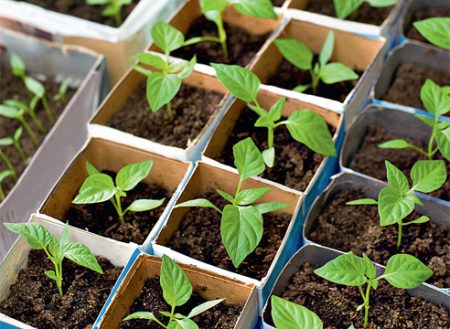
What else should you keep in mind when choosing a date for planting pepper seedlings?
- The first leaflet appears 15-20 days after the formation of sprouts.
- The buds form in about 45-50 days.
- Ripening of the first fruit occurs a month after flowering ceases, that is, after 80-130 days from germination.
Suppose there is a variety that bears fruit 4 months after the emergence of seedlings, and the crop must be removed on August 1. We count from this date 120 days in the opposite direction. We receive on April 3. If you take another 2 weeks, you get the right number - March 20. On this day, you need to start germinating planting material, and on April 3 - to planting peppers in seedlings.
The Siberian climate is unstable, so it may happen that the plants are already ready for planting, and the earth has not yet warmed up to the desired temperature. Do not wait for the most favorable conditions, because pepper can outgrow, take root poorly in new territory and not bear fruit.
Many gardeners use the lunar calendar to plant seeds.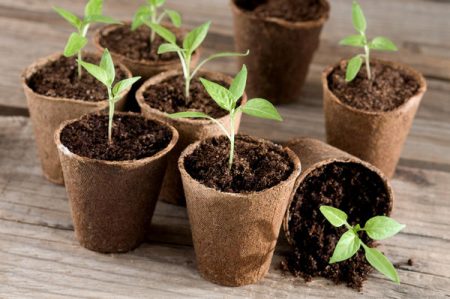
How to prepare pepper?
You can grow this culture, having the right planting material, capacity and soil. Consider all the stages of preparation:
- Seed selection. Unsuitable for sowing specimens (deformed, weak) are removed. You can determine the quality of grains as follows: take a 5% solution of sodium chloride and lower the planting material into it for 10 minutes. Unsuitable seeds will pop up. And best of all, at any time, before sowing, to plant a few pieces from a sachet for testing, but not to germinate. By the number of seedlings, it will be clear which seeds are of high quality, and when to start sowing, at what time the sprout will appear.
Grains suitable for planting are treated to prevent damage by fungus. Seeds are dipped in a gauze bag and for 30 minutes put in a strong solution of potassium permanganate. Then they are washed without removing from gauze. Sometimes planting material is sold after processing. The instructions for it must be read very carefully.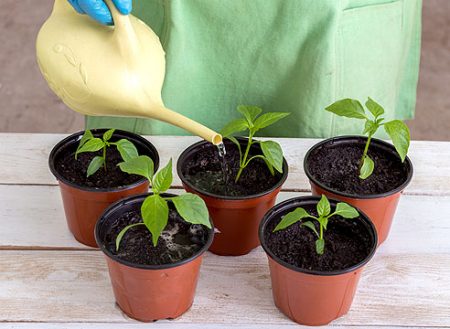
If it is not clear whether the seeds sprout themselves, begin germination.They are placed at a distance from each other on a doubled wet material. So that the liquid does not evaporate instantly, the seeds are covered. They are placed in a warm room with a temperature of about +25. It is not necessary to allow the seeds to germinate further than 1 mm., Otherwise, when sowing, the tip can be torn off. Then the fruits can not wait.
- Preparation of soil mixtures. Seeds grow correctly only in loose and fertile soil. There is a ready ground for pepper on sale. It is sifted, washed sand is added there. There is an option to mix the soil yourself: for 1 part of washed sand there are 2 peat and rotted compost. Sand can be replaced with ash. All components mix well, add fertilizer.
Some experts recommend that before planting, disinfect the ground with special compounds or folk remedies. But this is a moot point, since not only harmful, but also beneficial microorganisms are destroyed. So disinfection should be carried out only in seedling containers. And to sow seeds - only 24 hours after the procedure.
Soil from areas where vegetables grew, primarily nightshade, or ornamental plants, is not suitable for pepper.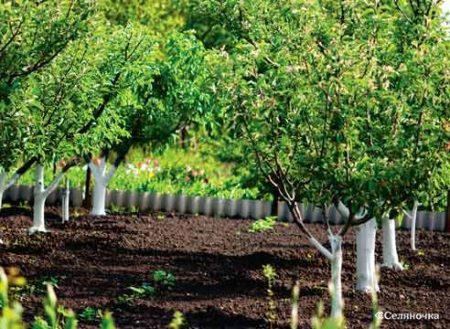
Sod is taken from the land on which perennials were located.
How to sow seeds?
Peppers have weak roots, which can easily break and not fully grow. As a result, the seedlings will not take the transplant well. So it is better to immediately place the seeds immediately in the container where they will develop to an open garden or greenhouse. It should be at least 0.5 liters. and 11 cm. in height.
When planting, they look so that the sprout goes up. Seeds should be covered with soil at least 3 mm., So that the roots do not form very close to the surface.
The temperature of the soil should not be below +25 or above +30. Seeds are watered with warm (preferably thawed) water, covered with a transparent film and placed in a warm, lit room. Pepper only produces crops in a specific climate. He needs heat at all stages of formation, starting from the formation of sprouts. If the soil temperature is 25-30 degrees, seedlings form after a week, 20 after 2, 18 after 3, 14 after 4. In colder soil, the seeds stop growing.
Once the seeds have sprouted, it is advisable to lower the soil temperature to +16 to strengthen the roots of the vegetable. When two leaves appear, it is recommended to increase it to +22, and after a dive, to +25.
Peppers also need lighting to grow. If it is enough, after 9 leaves, a flower forms at the branch point. With a lack of light at this place, another leaf is formed. Then the fruit picking time comes later, which is unacceptable in Siberia, where the summer is very short. If the culture needs additional light, 6 cm above the seedlings have a fluorescent lamp and turn it on for up to 15 hours a day.
Seed Planting Procedure
The capacity should be processed with potassium permanganate. The bottom is lined with drainage, and the nutritious composition for pepper is laid on top. Then the soil is poured so that at least 4 cm remains until the end of the container.
Before planting seeds, the soil is watered. If several pieces are placed in one container, they are laid out on the surface of the earth, at a distance of 1 cm from each other and 3 cm - between the rows. The same amount of space should be between the edges of the container and the grains.
For convenience, paper plates are attached to the pots, where the planting date and the name of the variety are recorded.
Crops need to be ventilated so that mold does not appear on them.
When watering, you need to look for stagnation of water in the pallets. To young plants that are drawn to the light, do not lean in one direction, the container must be regularly turned over.
Topping seedlings of peppers does not begin before the first leaves appear, otherwise all the plant's energy will be spent on greens.You can use liquid fertilizer for flowers in the ratio of 2 teaspoons to 5 liters of water.
10 days before the pepper is planted in open soil, it must be hardened. For this, it is carried out into the air when there is no wind. At first, an hour is enough on the street, then more time is required. The procedure is carried out so that the vegetable better adapts in the open field and does not pick up dangerous diseases.
Peat pills: what are they for?
To seedlings received the necessary nutrients, sprouted or dry seeds are placed in a container with tablets filled with boiled water. From moisture, they swell, become 5 times larger and become cylindrical. Excess water is drained.
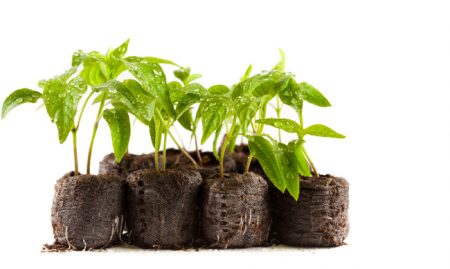 A hole of 1.5 cm is made on top of the tablet, the sprouted seed is placed there, sprinkled with earth. After that, everything goes the same as when planting in the soil mixture. If peppers are grown in peat tablets, top dressing is optional.
A hole of 1.5 cm is made on top of the tablet, the sprouted seed is placed there, sprinkled with earth. After that, everything goes the same as when planting in the soil mixture. If peppers are grown in peat tablets, top dressing is optional.
Extra moisture for seedlings is needed when tablets are reduced in size. Water is poured to the bottom of the tank so that it is absorbed in time and does not stagnate.
The vegetable is transplanted from the container to the pots after the roots have sprouted through a grid of tablets. Therefore, the pots are filled with soil at 4 cm, and in the middle they put a tablet, carefully distributing the roots on the ground. Then they add more soil, level it. In conclusion, seedlings are watered from the edge of the pot.
Landing
Pepper should grow in a sunny area without drafts, in soil of medium acidity, where there is no weed grass.
Vegetables are planted in open ground after the appearance of the first buds. The soil should not be colder +14. The optimal distance between plants is 0.5 m.
The transplant is carried out by transshipment. Before this, holes are made of such a depth as the vegetable was in the container. One tablespoon of a mixture containing nitrogen, potassium and phosphorus can be poured into a well. Chlorine should not be included.
The root system of the pepper located in the hole is 2/3 sprinkled with earth, watered 3 liters. slightly warm water. After that, the container is completely filled with soil and a label is attached. It is possible to mulch with such materials as straw, peat, sawdust, last year's compost. If necessary, the plant is tied up.
The support is installed in the soil before the pepper is planted so that the fragile root system is not damaged.
Vegetables are not watered to root. If the climate is not hot, the culture is supplied with water once a day, under the root. It is necessary not to overdo it with the quantity, otherwise the moisture will stagnate in the soil.
Soil loosening is carried out twice a season. The first time this is done after rooting.
When flowers form, the culture is spudded to get a better crop.
You can not plant different varieties of pepper too close to each other, to prevent pollination.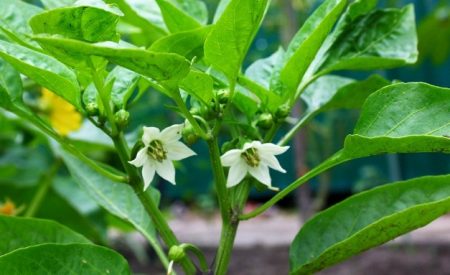
Pepper varieties suitable for Siberian conditions
In a harsh climate, not all varieties of heat-loving culture can grow. Therefore, before planting pepper there, you need to pick up an unpretentious variety. These include:
- Tusk, Siberian Prince - early;
- Siberian felt boots, Siberian format, Siberian bonus, Oriental bazaar - mid-season;
- Cardinal, Orange Miracle, Gift of Moldova - for open areas
When purchasing planting material in the store, you need to pay attention to the shelf life. As a rule, seeds fail after 4 years. But it’s better to buy them fresh, then more will come.
Reviews
At the forums, Siberian gardeners share with each other their opinions and tips:
“For several years I have been planting bell and bitter peppers, and I am eyeing the seedlings as they develop. I came to the conclusion that the seeds should be germinated, planted in warm soil, covered with a film. Then they will rise quickly, and the pepper will be pretty ”(Veronica);
“We have pepper seedlings standing on the window, but growing very weakly. Although we did the sowing in January and watched the plant. That was until the moment we put up the PVC windows.And when the pepper received the heat in the right amount, it went up, and in a couple of months the bushes became normal size. Now we are planting seeds at the end of winter, seedlings are normal ”(Nikolai)
So, does it make sense to cultivate pepper in Siberia? Yes, if the variety is correctly selected, the planting dates are respected, and competent plant care is carried out.




 Calorie pepper stuffed with meat and rice - BZHU per 100 grams
Calorie pepper stuffed with meat and rice - BZHU per 100 grams Gorky pepper - the best varieties for open ground
Gorky pepper - the best varieties for open ground Hot pepper seeds - the best varieties for open ground and reviews
Hot pepper seeds - the best varieties for open ground and reviews Capsicum tincture for hair - how to use and reviews
Capsicum tincture for hair - how to use and reviews